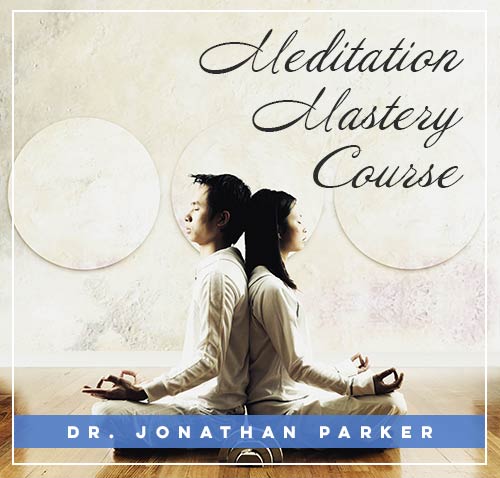Understanding Meditation Mantras

Before diving in, please note: This post is for informational purposes only. If you’d like to know more about how we approach topics, feel free to check out our friendly Disclaimer Page.
Hey there, amazing readers! 🖐️ Just a quick note: yes, we know there are a lot of ads here. Trust us, we get it—it’s not the prettiest look, but they help us keep this blog alive and kicking. Those pesky little ads cover the costs of all the behind-the-scenes magic, from hosting and tech stuff to creating content we hope you’ll love.
We’re committed to delivering quality posts, and your support (even just sticking around despite the ads) means everything to us. So, bear with us, and thanks for helping us keep the good vibes rolling. Now, on to the fun stuff! 😉
TRANSLATE BUTTON AT THE END OF THE ARTICLE
What are meditation mantras?
Meditation mantras are sacred words, sounds, or phrases repeated during meditation to help focus the mind and achieve a state of deep relaxation.
The word "mantra" comes from Sanskrit and can be broken down into "man," meaning mind, and "tra," meaning to protect or free from.
Therefore, a mantra is a tool used to protect the mind from distractions and free it from the constant chatter that often fills our thoughts.
Mantras can be chanted aloud or repeated silently, depending on personal preference.
They are often associated with specific meanings or intentions, but they can also be nonsensical sounds that create a rhythmic pattern to help quiet the mind.
The repetitive nature of chanting a mantra can lead to a state of heightened awareness and inner peace.
Incorporating mantras into your meditation practice can enhance the overall experience and deepen your connection to the present moment.
By focusing on the sound and vibration of the mantra, you can quiet the fluctuations of the mind and access a sense of calm and clarity that may be difficult to achieve through other means.
The history of meditation mantras
The use of meditation mantras dates back thousands of years to ancient civilizations such as those in India and Tibet.
Mantras were traditionally used in spiritual practices to connect with higher consciousness and achieve enlightenment.
Different cultures and religions have their own unique traditions surrounding mantras, but the underlying principle remains the same – using sound vibrations to quiet the mind and access deeper states of awareness.
In Hinduism, mantras are considered a form of prayer and are often recited during rituals and ceremonies.
The repetition of mantras is believed to have a purifying effect on the mind and body, leading to spiritual growth and self-realization.
In Buddhism, mantras are used to focus the mind and cultivate qualities such as compassion, wisdom, and inner peace.
Over the centuries, the practice of using mantras in meditation has spread to various parts of the world and has been embraced by people of different faiths and beliefs.
Today, meditation mantras are used by millions of individuals seeking to improve their mental, emotional, and spiritual well-being.
Benefits of using mantras in meditation
Using mantras in meditation offers a wide range of benefits for both the mind and body.
Some of the key advantages of incorporating mantras into your practice include:
Enhanced focus and concentration: Mantras provide a focal point for your attention, helping to quiet the mind and prevent distractions from arising during meditation.
Stress reduction: The repetitive nature of chanting a mantra can have a calming effect on the nervous system, reducing stress and anxiety levels.
Increased self-awareness: Mantras can help you become more attuned to your thoughts, emotions, and inner state, leading to greater self-awareness and self-reflection.
Improved emotional well-being: Chanting mantras can elevate your mood, boost positivity, and create a sense of inner peace and contentment.
Spiritual growth: Mantras have long been associated with spiritual practices and can deepen your connection to higher consciousness, inner wisdom, and universal energy.
How to choose the right mantra for you
Selecting the right mantra for your meditation practice is a highly personal and individualized process.
There are several factors to consider when choosing a mantra that resonates with you and aligns with your intentions:
Meaning: Some people prefer mantras with specific meanings that reflect their goals, values, or aspirations.
Choose a mantra that holds significance for you and evokes a sense of purpose or inspiration.
Sound: The sound and vibration of a mantra can have a profound impact on your meditation experience.
Experiment with different mantras to find one that feels soothing and harmonious to you.
Length: Mantras can be short and simple, like single-syllable sounds such as "Om," or longer phrases that convey deeper meanings.
Consider the length of the mantra that best suits your practice.
Cultural tradition: Some individuals may feel drawn to mantras from specific cultural traditions or religions that resonate with their beliefs or spiritual background.
Explore different traditions to find a mantra that feels authentic to you.
Ultimately, the right mantra for you is one that feels natural, comfortable, and uplifting.
Trust your intuition and allow yourself to be guided by what resonates with your heart and soul.
Understanding the power of sound vibrations
Sound vibrations play a crucial role in the effectiveness of meditation mantras.
When we chant or repeat a mantra, we are creating a vibration that resonates throughout our body and mind, influencing our energy and consciousness.
The rhythmic repetition of the sounds can help entrain the brainwaves, leading to a state of deep relaxation and heightened awareness.
Different mantras produce different frequencies of sound vibrations, each with its own unique effect on the mind and body.
Some mantras are designed to stimulate specific energy centers in the body, known as chakras, while others evoke feelings of peace, love, or joy.
By tuning into the vibration of a mantra, we can access deeper states of consciousness and unlock hidden aspects of ourselves.
The power of sound vibrations in mantras is not merely a theoretical concept but has been validated by modern science.
Studies have shown that chanting mantras can have a positive impact on brainwave patterns, neurotransmitter levels, and overall well-being.
By harnessing the power of sound, we can tap into a profound source of healing, transformation, and inner peace.
Incorporating mantras into your meditation practice
Integrating mantras into your meditation practice can enhance the depth and effectiveness of your sessions.
Here are some tips for incorporating mantras into your practice:
Start with a few minutes: Begin by chanting or repeating a mantra for a few minutes at the beginning of your meditation session.
Gradually increase the duration as you become more comfortable with the practice.
Focus on the breath: Coordinate the repetition of the mantra with your breath, syncing the sound with the inhalation and exhalation.
This can help create a sense of rhythm and flow in your meditation.
Use mala beads: Consider using mala beads, a string of 108 beads used for counting mantras, to keep track of your repetitions.
Moving each bead with every repetition can help you stay present and focused.
Experiment with different mantras: Explore a variety of mantras to find one that resonates with you.
You can choose traditional Sanskrit mantras, affirmations in your native language, or even create your own personalized mantra.
Stay consistent: Make mantra meditation a regular part of your routine to experience the full benefits.
Consistency is key to developing a deep connection with your chosen mantra and cultivating a sense of inner peace and balance.
By incorporating mantras into your meditation practice, you can deepen your spiritual connection, quiet the mind, and access a profound sense of inner peace and well-being.
Common misconceptions about meditation mantras
Despite the numerous benefits of using mantras in meditation, there are several common misconceptions surrounding this ancient practice.
Here are some of the misconceptions and the truths behind them:
Mantras are only for spiritual people: While mantras have deep roots in spiritual traditions, anyone can benefit from using them in meditation.
Mantras are a powerful tool for quieting the mind, reducing stress, and enhancing focus, regardless of one’s beliefs or background.
You have to chant mantras loudly: While some people prefer to chant mantras aloud, it is not necessary to do so.
Mantras can be repeated silently in the mind, allowing for a more subtle and internalized experience of meditation.
Mantras have to be in Sanskrit: While traditional Sanskrit mantras have a long history and are deeply rooted in spiritual practices, mantras can be in any language or even nonsensical sounds.
The key is to choose a mantra that resonates with you and helps you achieve a state of inner peace.
Mantras are magical incantations: Mantras are not magical spells that guarantee instant results.
They are tools for focusing the mind and cultivating inner awareness.
Consistent practice and dedication are essential for experiencing the full benefits of mantra meditation.
By dispelling these common misconceptions and approaching meditation mantras with an open mind and heart, you can harness their full potential for transformation and self-discovery.
Enhancing your focus and concentration with mantras
One of the primary benefits of using mantras in meditation is the enhancement of focus and concentration.
By repeating a mantra, you provide your mind with a single point of attention, which can help quiet the mental chatter and distractions that often arise during meditation.
Here are some ways in which mantras can improve your focus and concentration:
Anchor for the mind: Mantras serve as an anchor for the mind, providing a focal point that prevents it from wandering.
By focusing on the sound and vibration of the mantra, you can train your mind to stay present and attentive.
Interrupting negative thoughts: Mantras can disrupt the stream of negative or repetitive thoughts that may arise during meditation.
By replacing these thoughts with the sounds of the mantra, you can create a space for inner peace and clarity.
Enhancing mindfulness: Mantras can deepen your mindfulness practice by cultivating a heightened awareness of the present moment.
By tuning into the sound and vibration of the mantra, you can develop a sense of inner stillness and presence.
Building mental resilience: Regular practice of mantra meditation can strengthen your capacity to focus and concentrate, both during meditation and in everyday life.
By training your mind to stay centered on the mantra, you can develop greater mental resilience and clarity.
By incorporating mantras into your meditation practice, you can cultivate a sense of deep focus, concentration, and presence that can benefit all areas of your life.
Exploring different types of meditation mantras
There are various types of meditation mantras that you can explore to enhance your practice and deepen your connection to the present moment.
Here are some common types of meditation mantras and their unique qualities:
Sanskrit mantras: Traditional Sanskrit mantras have been used for centuries in spiritual practices to invoke specific qualities or aspects of consciousness.
Examples include "Om," "Om Namah Shivaya," and "Om Mani Padme Hum."
Seed mantras: Seed mantras are single-syllable sounds that are believed to contain the essence of a particular deity or energy.
Examples include "Aim" for Saraswati, the goddess of knowledge, and "Gam" for Ganesh, the remover of obstacles.
Affirmation mantras: Affirmation mantras are positive statements or intentions that you repeat to yourself during meditation.
Examples include "I am enough," "I am love," and "I am at peace."
Nature mantras: Nature mantras involve connecting with the elements of the natural world through sounds or words.
Examples include "Wind," "Water," "Earth," and "Fire."
By exploring different types of meditation mantras, you can find one that resonates with you and enhances your meditation practice in a profound and meaningful way.
The science behind the effectiveness of mantras
The effectiveness of meditation mantras is supported by scientific research that has shown the positive impact of chanting on the mind, body, and spirit.
Studies have revealed the following scientific benefits of using mantras in meditation:
Reduction of stress: Chanting mantras has been found to lower cortisol levels, reduce anxiety, and promote relaxation, leading to a significant decrease in stress levels.
Enhancement of cognitive function: Mantras have been shown to improve cognitive function, memory, and attention span by activating different areas of the brain involved in focus and concentration.
Regulation of emotions: Mantras can help regulate emotions, increase feelings of positivity and well-being, and improve overall emotional resilience and stability.
Stimulation of the vagus nerve: Chanting mantras can stimulate the vagus nerve, which is responsible for regulating the parasympathetic nervous system and promoting a state of calm and relaxation.
Balancing of brainwave patterns: Mantras have been found to balance brainwave patterns, leading to a state of deep relaxation, inner peace, and heightened awareness.
The science behind the effectiveness of mantras in meditation underscores their profound impact on our physical, mental, and emotional well-being, providing a solid foundation for their widespread use and popularity.
Overcoming obstacles in using meditation mantras
While meditation mantras offer numerous benefits, there can be obstacles that arise when incorporating them into your practice.
Here are some common obstacles and strategies for overcoming them:
Restlessness: If you find it challenging to sit still and focus during mantra meditation, try incorporating movement into your practice, such as walking meditation or yoga, to channel excess energy.
Distractions: If external distractions interfere with your meditation, create a designated space for practice that is quiet and free from interruptions.
Consider using earplugs or a white noise machine to block out noise.
Negative self-talk: If negative thoughts or self-doubt arise during meditation, use your mantra as a tool to redirect your attention back to the present moment.
Remind yourself of the power and positivity of the mantra.
Impatience: If you feel frustrated or impatient with the process of mantra meditation, remind yourself that progress takes time and consistency.
Practice self-compassion and gentleness as you navigate the ups and downs of the practice.
By acknowledging and addressing these obstacles with patience and perseverance, you can deepen your meditation practice and experience the transformative benefits of mantra meditation.
Tips for deepening your meditation practice with mantras
To deepen your meditation practice with mantras and unlock their full potential, consider implementing the following tips and strategies:
Set intentions: Before each meditation session, set clear intentions for your practice and choose a mantra that aligns with your goals and aspirations.
Practice regularly: Consistency is key to developing a deep connection with your chosen mantra and reaping the full benefits of mantra meditation.
Aim to practice daily, even if only for a few minutes.
Experiment with different mantras: Explore a variety of mantras to find one that resonates with you on a deep level.
Trust your intuition and choose a mantra that evokes a sense of peace and harmony.
Combine mantras with other techniques: Enhance your meditation practice by combining mantras with other techniques such as breathwork, visualization, or mindfulness.
This can deepen your experience and bring new dimensions to your practice.
Seek guidance: If you are new to mantra meditation or feel stuck in your practice, consider seeking guidance from a teacher, mentor, or spiritual guide who can offer support, encouragement, and personalized guidance.
By incorporating these tips into your meditation practice, you can deepen your connection to your chosen mantra and harness its transformative power for greater clarity, peace, and well-being.
Conclusion
In conclusion, meditation mantras are powerful tools for quieting the mind, enhancing focus and concentration, and deepening your spiritual connection.
By understanding the history, benefits, and science behind mantras, you can incorporate them into your meditation practice with confidence and intention.
By choosing the right mantra, understanding the power of sound vibrations, and overcoming obstacles, you can unlock the secrets of mantra meditation and experience profound transformation and inner peace.
Remember to approach mantra meditation with an open heart, patience, and dedication, allowing the sound and vibration of the mantra to guide you on a journey of self-discovery and spiritual growth.
Embrace the transformative power of mantras and watch as they enrich your meditation practice and bring greater peace and harmony into your life.

The Enlightenment Journey is a remarkable collection of writings authored by a distinguished group of experts in the fields of spirituality, new age, and esoteric knowledge.
This anthology features a diverse assembly of well-experienced authors who bring their profound insights and credible perspectives to the forefront.
Each contributor possesses a wealth of knowledge and wisdom, making them authorities in their respective domains.
Together, they offer readers a transformative journey into the realms of spiritual growth, self-discovery, and esoteric enlightenment.
The Enlightenment Journey is a testament to the collective expertise of these luminaries, providing readers with a rich tapestry of ideas and information to illuminate their spiritual path.
Our Diverse Expertise 🌟
While our primary focus is on spirituality and esotericism, we are equally passionate about exploring a wide range of other topics and niches 🌍📚. Our experienced team is dedicated to delivering high-quality, informative content across various subjects ✨.
To ensure we provide the most accurate and valuable insights, we collaborate with trusted experts in their respective domains 🧑🏫👩🏫. This allows us to offer well-rounded perspectives and knowledge to our readers.
Our blog originally focused on spirituality and metaphysics, but we’ve since expanded to cover a wide range of niches. Don’t worry—we continue to publish a lot of articles on spirituality! Frequently visit our blog to explore our diverse content and stay tuned for more insightful reads.






